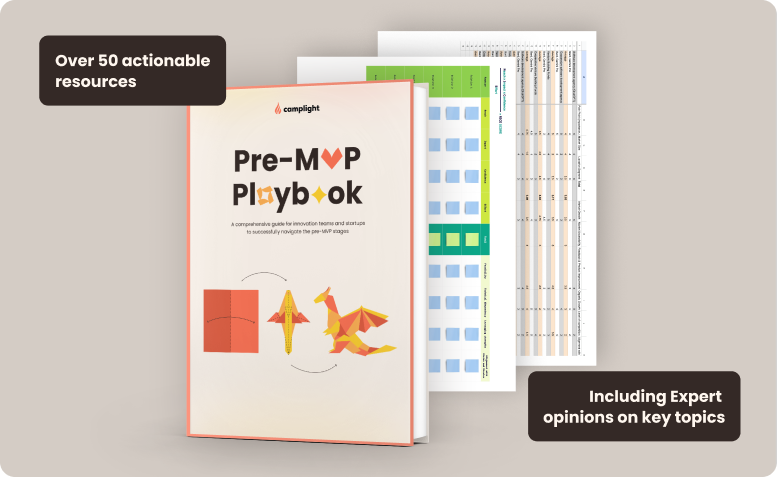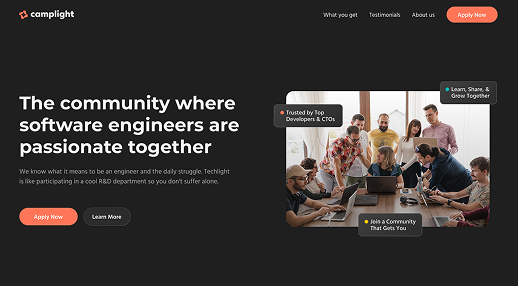At first glance, the concept of “failing fast” might seem like a paradox. After all, who sets out on a venture with failure in mind? We’ve been conditioned to think of failure as the ultimate defeat—a dead end on the road to success.
But what if failure, when approached correctly, is actually a hidden shortcut to success?
The idea behind failing fast is as counterintuitive as it is powerful. Instead of avoiding failure at all costs, savvy entrepreneurs embrace it—so long as it happens quickly and early.
The logic is simple: it’s far better to stumble and fall before you’ve invested a fortune in time, money, and effort. In corporate venture building, where the stakes are sky-high, this approach is invaluable.
By failing fast, you can cut your losses, learn valuable lessons, and pivot to a more promising path before your resources are exhausted.As the saying goes, “It’s not about how hard you fall, but how quickly you get back up.” This mindset turns what could be seen as setbacks into stepping stones toward ultimate success.
The Philosophy of Failing Fast
The philosophy of failing fast is deeply intertwined with the principles of lean startup methodologies, which advocate for rapid iteration, constant feedback, and quick learning..
It was popularized by Silicon Valley visionary Eric Ries, the author of The Lean Startup, where he introduces concepts like “validated learning” and “build-measure-learn”. Ries championed the idea that startups should aim to quickly test their assumptions and learn from their mistakes before investing heavily in ideas that might not work out.

But the idea isn’t limited to startups—it’s just as crucial in the corporate world, where innovation often happens within complex and resource-rich environments.
At Camplight, we’ve taken this philosophy to heart. Our experience during the years has led us to distinguish between quick decisions and informed decisions. We believe that the best way to test ideas is through rapid prototyping, where concepts are quickly brought to life and tested in the real world. This approach allows us to gather feedback swiftly, learn from what doesn’t work, and pivot when necessary.
Our take on failing fast is personal. We see it as a process of continuous refinement, where each small failure brings us one step closer to a breakthrough. By embracing this mindset, we ensure that our ventures are built on a foundation of real-world insights, not untested assumptions.
Have you heard of “pretotyping”?
Alberto Savoia, a former engineer at Google, took this concept further with the idea of "pretotyping"—a step before prototyping. Pretotyping focuses on testing the core assumptions of an idea with minimal resources, essentially allowing companies to "fail even faster".
Rachel Audige shared in her post a funny quote by Savoia:
“Prototypes often turn into productypes — a prototype gone too far — and you can kiss fail-fast goodbye.”
Alberto Savoya
At Camplight, we’ve adopted pretotyping in our venture-building process. By quickly validating ideas before moving to more resource-intensive stages, we ensure that only the most promising concepts move forward. We actually used Savoia’s book as an inspiration when working on Team-GPT.In corporate venture building, the approach of pretotyping is a game-changer. It provides a structured environment where ideas can be rapidly tested and iterated upon, allowing companies to innovate faster and more efficiently. Check our post to gain a better understanding of how corporate innovation could be accelerated.
Learning from Failures
If there’s one thing that’s clear in both startup and corporate worlds, it’s this: failure is not the enemy. In fact, it’s a powerful teacher. Each misstep provides valuable lessons that can lead to future success, especially when viewed through the lens of corporate venture building. Do you remember how many times you fell before you learned to ride a bike? It is the same in business.

Take IBM, for example. Once known primarily for its hardware, IBM faced significant challenges as the tech landscape evolved. But instead of clinging to a sinking ship, they pivoted—shifting their focus from hardware to services. This transformation wasn’t just a survival tactic, IBM became a leader in the service industry.
Another example is Google, where many of the products (like Gmail) started as internal experiments. Through pretotyping, Google was able to test these ideas quickly and refine them based on real user feedback. That’s how we have some of the most popular services on the web today.
At Camplight, we see venture building as a platform for accelerated learning. By creating a safe space for experimentation, we take risks, learn from failures, and come back stronger.
Strategies for Failing Fast
So, how can startups and corporate ventures effectively embrace the fail-fast approach? Here are some practical tips:
- Pretotyping: Before you dive headfirst into development, test your idea with a “pretotype.” This allows you to quickly validate your assumptions with minimal investment, and ensures you’re on the right track from the start.
- Set clear goals: This helps focus your efforts and ensures that each iteration is productive and aligned with your objectives.
- Foster a culture of openness: Encourage team members to share and analyze failures without fear of blame. Transparency and open communication are crucial.
- Leverage venture building frameworks: Utilize the frameworks provided by corporate venture building to structure these experiments. A well-supported experiment, even if it fails, contributes to the overall knowledge base and strengthens future efforts.
For more on how to implement these strategies, check out our posts on team dynamics, fostering innovation, and cultivating a growth mindset in corporate environments. Here’s a link to recent one on how to build smarter, not harder.
The Role of Mentorship and Community
Mentorship and community play a huge role in helping both startups and corporate ventures navigate the inevitable challenges that come with innovation. Collaboration is key. Our Camplighters often share expertise and insights. This enhances individual skills and contributes to the overall efficiency and success of the team. Check out one of our latest interviews here.
In corporate ventures, where the stakes are particularly high, having access to experienced mentors can make the difference between a failure that teaches and a failure that sinks the ship.
Corporate networks offer a wealth of resources and insights. In many cases, corporate venture builders serve as key mentors, guiding teams through the highs and lows of the innovation process. Moreover, corporate venture building ecosystems foster a sense of community where knowledge and experiences are shared, accelerating the learning process and driving collective success.
Balancing Failure and Success
As already explained, failing fast could be beneficial. But it’s equally important to know when to pivot and when to persevere. The key lies in finding the right balance between embracing failure as part of the journey and pushing toward long-term success.

In corporate ventures, this balance is often guided by data and feedback. Knowing when to pivot or persevere can be the difference between a project that evolves into something great and one that drains resources without delivering value.
Corporate venture building frameworks provide the tools needed to navigate these decisions, helping teams manage the risks associated with failing fast while keeping an eye on sustainable success.
Our discussions on decision-making frameworks, balancing risk, and sustainability in corporate settings offer deeper insights into how to strike this balance effectively.
Conclusion
We would like to end this article by simply sharing this quote by Sir James Dyson, the British inventor and business magnate: “Initiate a failure by doing something that’s very silly, unthinkable, naughty, dangerous[…] I made 5,127 prototypes of my vacuum before I got it right. There were 5,126 failures. But I learned from each one. That’s how I came up with a solution. So I don’t mind failure.”
Do you want to talk failure with us? We believe that every setback is an opportunity to learn and grow. We’d love to hear your stories and insights on failing fast. Let’s connect.







